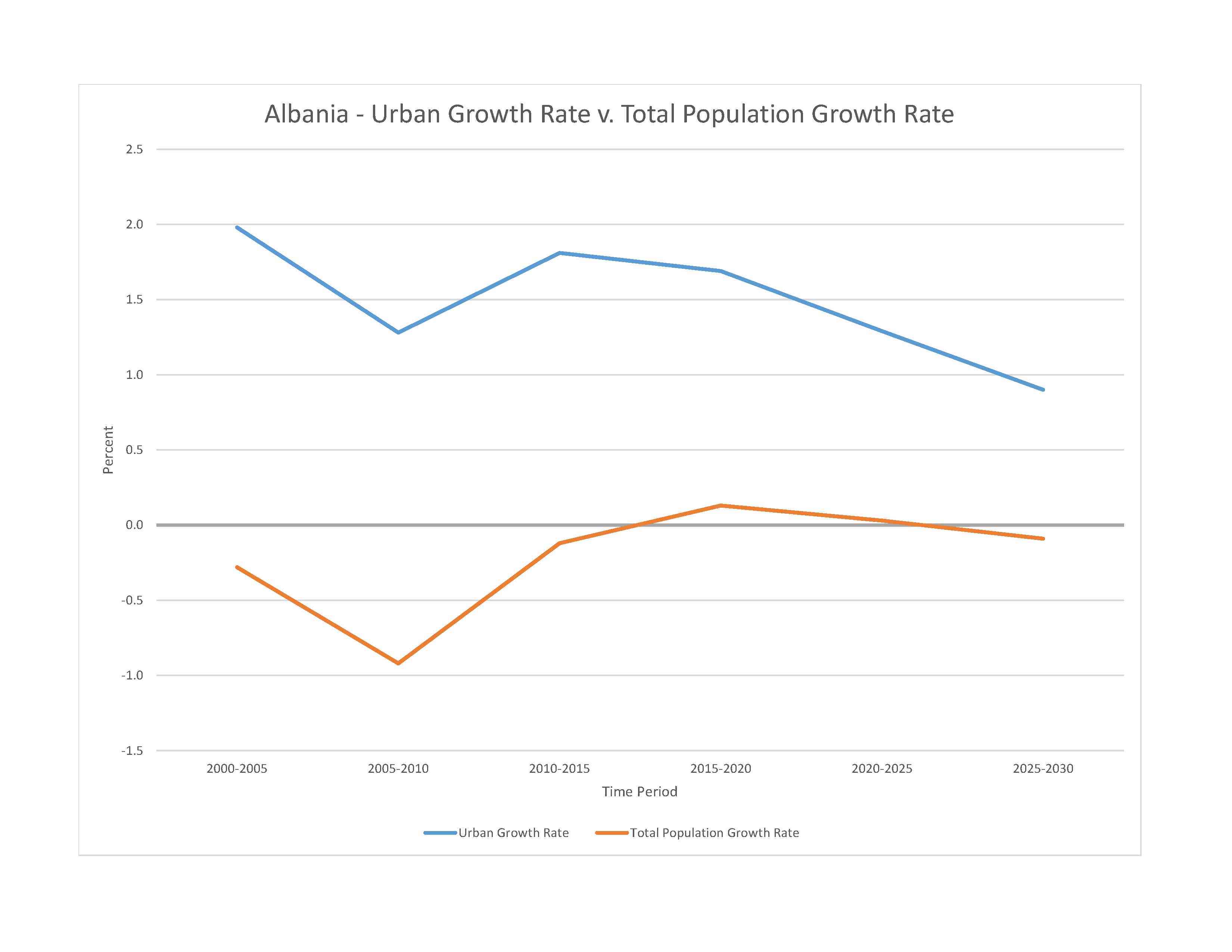
3,101,621 (2023 est.)
noun: Albanian(s)
adjective: Albanian
Albanian 82.6%, Greek 0.9%, other 1% (including Vlach, Romani, Macedonian, Montenegrin, and Egyptian), unspecified 15.5% (2011 est.)
note: data represent population by ethnic and cultural affiliation
Albanian 98.8% (official - derived from Tosk dialect), Greek 0.5%, other 0.6% (including Macedonian, Romani, Vlach, Turkish, Italian, and Serbo-Croatian), unspecified 0.1% (2011 est.)
major-language sample(s):
Libri i fakteve boterore, burimi i pazevendesueshem per informacione elementare (Albanian)
The World Factbook, the indispensable source for basic information.
Muslim 56.7%, Roman Catholic 10%, Orthodox 6.8%, atheist 2.5%, Bektashi (a Sufi order) 2.1%, other 5.7%, unspecified 16.2% (2011 est.)
note: all mosques and churches were closed in 1967 and religious observances prohibited; in November 1990, Albania began allowing private religious practice
0-14 years: 17.9% (male 290,624/female 264,536)
15-64 years: 67.53% (male 1,030,436/female 1,064,217)
65 years and over: 14.57% (2023 est.) (male 207,960/female 243,848)
total dependency ratio: 48.2
youth dependency ratio: 24.1
elderly dependency ratio: 24.1
potential support ratio: 4.2 (2021 est.)
total: 35.8 years (2023 est.)
male: 34.3 years
female: 37.2 years
0.19% (2023 est.)
12.5 births/1,000 population (2023 est.)
7.4 deaths/1,000 population (2023 est.)
-3.2 migrant(s)/1,000 population (2023 est.)
a fairly even distribution, with somewhat higher concentrations of people in the western and central parts of the country
urban population: 64.6% of total population (2023)
rate of urbanization: 1.29% annual rate of change (2020-25 est.)

520,000 TIRANA (capital) (2023)
at birth: 1.07 male(s)/female
0-14 years: 1.1 male(s)/female
15-64 years: 0.97 male(s)/female
65 years and over: 0.85 male(s)/female
total population: 0.97 male(s)/female (2023 est.)
26.6 years (2020 est.)
8 deaths/100,000 live births (2020 est.)
total: 10.5 deaths/1,000 live births (2023 est.)
male: 11.6 deaths/1,000 live births
female: 9.5 deaths/1,000 live births
total population: 79.7 years (2023 est.)
male: 77 years
female: 82.6 years
1.55 children born/woman (2023 est.)
0.75 (2023 est.)
46% (2017/18)
improved: urban: 97.3% of population
rural: 96.4% of population
total: 97% of population
unimproved: urban: 2.7% of population
rural: 3.6% of population
total: 3% of population (2020 est.)
6.7% of GDP (2018)
1.88 physicians/1,000 population (2020)
2.9 beds/1,000 population (2013)
improved: urban: 99.8% of population
rural: 100% of population
total: 99.9% of population
unimproved: urban: 0.2% of population
rural: 0.5% of population
total: 0.1% of population (2020 est.)
21.7% (2016)
total: 4.4 liters of pure alcohol (2019 est.)
beer: 1.75 liters of pure alcohol (2019 est.)
wine: 1.15 liters of pure alcohol (2019 est.)
spirits: 1.43 liters of pure alcohol (2019 est.)
other alcohols: 0.08 liters of pure alcohol (2019 est.)
total: 22.4% (2020 est.)
male: 38.8% (2020 est.)
female: 6% (2020 est.)
1.5% (2017/18)
67.2% (2023 est.)
women married by age 15: 1.4%
women married by age 18: 11.8%
men married by age 18: 1.2% (2018 est.)
3.1% of GDP (2020 est.)
definition: age 15 and over can read and write
total population: 98.4%
male: 98.7%
female: 98.2% (2021)
total: 14 years
male: 13 years
female: 15 years (2020)
NOTE: The information regarding Albania on this page is re-published from the 2024 World Fact Book of the United States Central Intelligence Agency and other sources. No claims are made regarding the accuracy of Albania 2024 information contained here. All suggestions for corrections of any errors about Albania 2024 should be addressed to the CIA or the source cited on each page.
This page was last modified 04 May 24, Copyright © 2024 ITA all rights reserved.